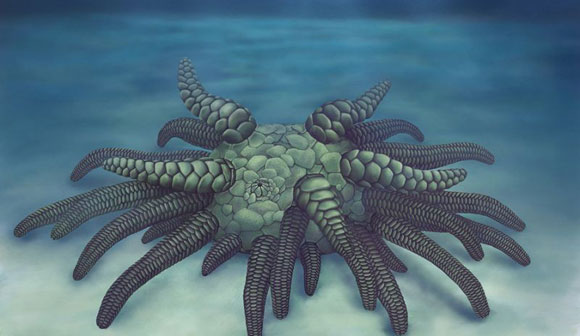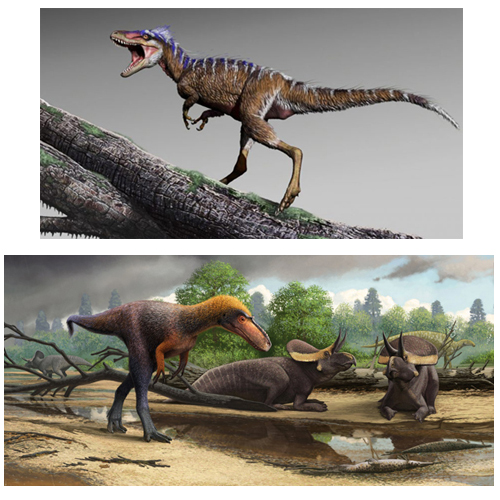Palaeontology Predictions for 2019 – How Did We Get On?
Palaeontology Predictions for 2019 – How Did We Get On?
One of the skills in science is being able to predict the outcome of any experiment. The prediction can then be compared with the actual outcome and the reasons for any variance can become another line of enquiry. In early January, there are lots of New Year resolutions being made, but for team members at Everything Dinosaur, rather than looking forward, we shall reflect on the list of palaeontology predictions we made twelve months ago. How accurate were our attempts at trying to second guess news stories we would cover in this blog?
Thus, we end the preamble and jump right in…
Here is the list of our 2019 palaeontology predictions with notes as to how well (or how badly) we did:
The List of Predictions (2019)
1). More ceratopsians to be described from America (four new members of the Marginocephalia).
2). Herefordshire Lagerstätte to make its mark again – a new species of Silurian marine invertebrate.
3). A new dinosaur from India.
4). Fifty new models available from Everything Dinosaur.
5). The presence of melanosomes amongst the Dinosauria (the colour of dinosaurs).
6). A new species of large azhdarchid pterosaur from northern Africa or the Hateg Basin.
7). New tyrannosaurids from the United States (two new species).
1). Four New Members of the Marginocephalia
We are off to a bit of a shaky start. In 2018, we reported on one new addition to the Marginocephalia and again in 2019 we covered just one new member of this clade. Our blushes were saved by the first unique dinosaur species to have been found in the Canadian Province of British Columbia – Ferrisaurus sustutensis. We thought there would be more horned dinosaurs and pachycephalosaurs from what was the southern portion of Laramidia, but no, Ferrisaurus roamed the more northerly parts of this ancient landmass.
Ferrisaurus sustutensis Life Reconstruction
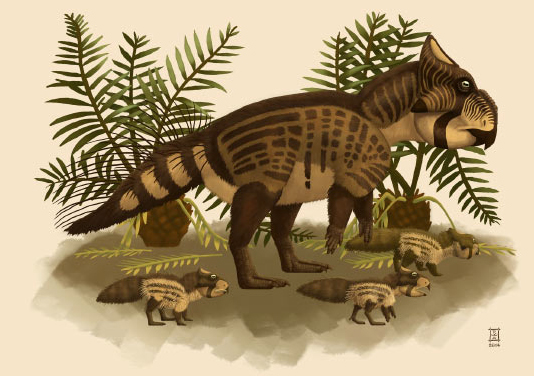
Ferrisaurus sustutensis illustrated. Just one new member of the Marginocephalia reported upon in 2019, the leptoceratopsid F. sustutensis.
Picture credit: Raven Amos and courtesy of the Royal British Columbia Museum
2). A New Species of Silurian Marine Invertebrate – Herefordshire Lagerstätte Fossil Find
Back in April 2019, team members wrote about the discovery of a multi-tentacled predator from the secret Silurian-aged Herefordshire Lagerstätte. Sollasina cthulhu was described in some press reports as a “monster”, but at just three centimetres in diameter, things need to be kept in perspective. However, it was likely a seafloor-dwelling, ferocious predator and a significant fossil discovery, as it helps to shed light on the evolution of sea cucumbers and their relatives, many of which are still with us today.
Sollasina cthulhu Life Reconstruction
Picture credit: Elissa Martin, (Yale Peabody Museum of Natural History)
3). A New Dinosaur from India
Whoops, despite lots of new dinosaurs being named and described last year (we think there were 43 new genera published), as far as the team members at Everything Dinosaur are aware, India drew a blank. Approximately 8 new genera were described from Argentina, China and the USA produced 6 and 5 respectively. Mongolia had 4 new dinosaur genera named in 2019. As for India, nothing, our prediction proved to be inaccurate. There was even a formal description of a long-awaited dinosaur discovery from Japan: Japan’s Greatest Dinosaur Fossil Gets a Name, but nothing from India, better luck next time.
Argentina Recorded Eight New Dinosaur Genera in 2019 including Bajadasaurus pronuspinax
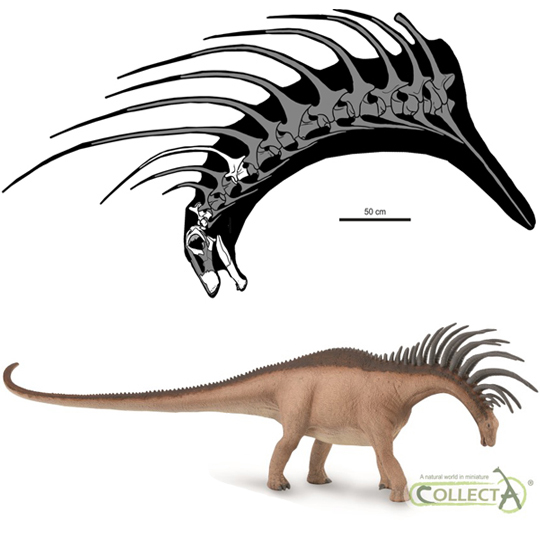
The bizarre cervical vertebrae of Bajadasaurus and a life reconstruction, one of eight new genera of dinosaur described from Argentina in 2019.
Picture credit: Gallina et al published in Scientific Reports and Everything Dinosaur
The Bajadasaurus model shown above is part of the CollectA Deluxe model range.
To view this range: CollectA Deluxe Prehistoric Life Models.
4). Fifty New Models Available from Everything Dinosaur
With new figures from Mojo Fun, Schleich, PNSO, Rebor, Papo, CollectA and Beasts of the Mesozoic there were more than fifty new prehistoric animal replicas added to the Everything Dinosaur range last year, how many more in 2020? Perhaps, we could have a go at a prediction for the next twelve months.
Lots and Lots of New Prehistoric Animal Models Added to the Everything Dinosaur Portfolio in 2019
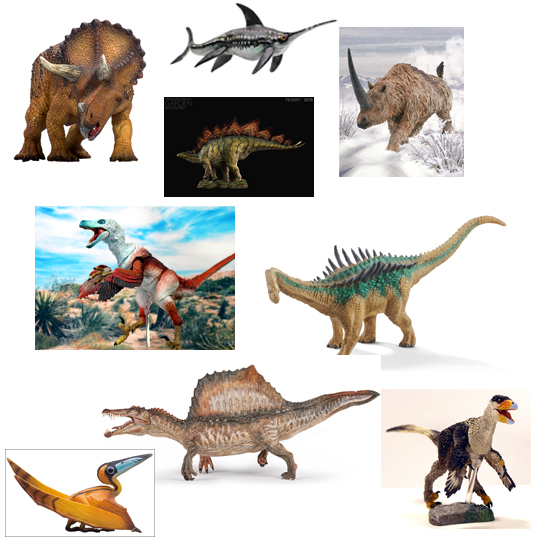
More than fifty different prehistoric animal models added to Everything Dinosaur’s huge range in 2019. Mojo Fun, PNSO, Rebor, CollectA, Beasts of the Mesozoic, Schleich and Papo what a huge range!
Picture credit: Everything Dinosaur
To see the range of prehistoric animal models and figures available from Everything Dinosaur: Prehistoric Animals and Dinosaur Models.
5). The Presence of Melanosomes Amongst the Dinosauria
East Gippsland (Victoria, Australia), currently being devastated by intense bush fires, provided Everything Dinosaur with evidence of the colour of dinosaurs from “Down Under”. Remarkable bird and non-avian fossilised feathers from the Koonwarra Fish Beds Geological Reserve were analysed and fresh insights into the plumage of Early Cretaceous inhabitants of southern Gondwana were gained.
The scientists, writing in the academic journal “Gondwana Research”, highlighted dark pigmentation which might have provided camouflage or helped with the absorption of energy from the rays of sun – helpful if you live in high latitudes. Looks like we got this prediction just about right.
One of the Tufted Body Feathers from the Research Paper
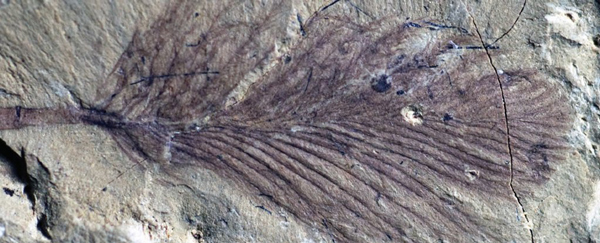
A fossilised feather from the Koonwarra Fish Beds Geological Reserve. More information on prehistoric pigmentation.
Picture credit: Kundrát et al (Gondwana Research)
6). A New, Large Azhdarchid Pterosaur
2019 proved to be a productive year for pterosaur research, sure enough one of the nine new genera named was indeed a giant, azhdarchid (Cryodrakon boreas). However, we predicted that this find would be reported from north African deposits or perhaps from the famous Hateg Basin of Romania.
We were correct when it came to the pterosaur but a few thousand miles out when it came to the location of its discovery. Like Ferrisaurus sustutensis, this was a fossil discovery from Canada, but not from British Columbia, the Cryodrakon fossil remains come from the Dinosaur Provincial Park Formation of southern Alberta. To read more about this giant flying reptile: The First Pterosaur Unique to Canada. As Ferrisaurus was the first dinosaur unique to Canada, so Cryodrakon is the first reported pterosaur that was unique to this country too.
7). Two New Tyrannosaurs from the United States
In February, we reported on a fast-running member of the Tyrannosauroidea from the Cedar Mountain Formation (Utah). This dinosaur was named Moros intrepidus. In May, Everything Dinosaur team members blogged about the newly described Suskityrannus hazelae. It [Suskityrannus] may only have been around three metres in length, but it represents one of the best known early Late Cretaceous tyrannosauroids yet to be described.
Moros intrepidus (top) and Suskityrannus hazelae (below)
Picture credit: Andrey Atuchin (S. hazelae) and Jorge Gonzalez (M. intrepidus)
So, all in all, not a bad set of predictions, some were admittedly more accurate than others. What predictions will we make for 2020? We will publish our thoughts tomorrow.
Visit Everything Dinosaur’s award-winning website: Everything Dinosaur.


